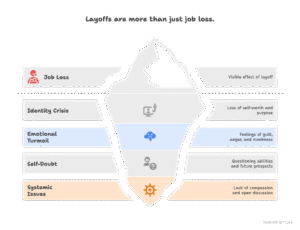
📈 From Inefficient Spends to driving ROAS: Building a High-Performance Growth Engine at MediBuddy
When I joined MediBuddy and took over the digital team in 2023, I noticed that for performance marketing, the return on ad spend (ROAS) was suboptimal. We were running paid campaigns across channels, but actual contribution was underreported, and results weren’t scaling efficiently. By taking a structured, data-driven approach — involving campaign restructuring, custom audience integration, and improved attribution — we transformed the channel into a growth powerhouse. Today, the same budgets drive over 13x ROAS, proving that true performance isn’t about spends alone — it’s about continuous optimization.
🎯 Objective
To maximize revenue and efficiency from paid media by:
- Understanding the current bottlenecks of performance at a campaign, adgroup, keyword and ad-level.
- Re-architecting the campaign structure
- Establishing precise attribution and tracking
- Creating a performance framework with lasting impact — without disproportionately increasing budgets
🔍 Audit: Finding the Gaps
The initial state showed multiple breakdowns:
- Campaigns lacked segmentation by intent, keyword match type, or service type. Multiple match types running in the same campaigns, adgroups not categorised by keywords hence ads were not showing relevant information to customers.
- Retargeting does not exist in Healthcare but we were reaching out to the same audience again and again – This was inefficient as existing converters were being shown ads repeatedly.
- ROAS stagnated due to ineffective bid allocation and ad / creative fatigue
🛠️ Execution: Structured, Strategic Overhaul
- Campaign Restructure for Granular Control
- Rebuilt campaigns by:
- Keyword intent (brand, non brand – broken down by service level)
- Match type isolation for bid and creative clarity
- Ad copy revision to ensure relevance, clarity, urgency.
- Set up experimentation frameworks to test messaging, CTAs.
- First-Party Audience Workaround via CleverTap
- Healthcare compliance limited traditional retargeting.
- Solution: Built custom user cohorts in CleverTap for each service type based on purchase behaviour
- Synced these lists with Google Ads & Meta to try and exclude recent converters and try to reduce budget wastage
- Revenue Cohort Tracking
- Implemented tracking systems to break down revenue by:
- Channel (Google, Meta, Apple or any other)
- Campaign
- Service type
- Type of Customer
- New vs. repeat customers
- Attribution Fix with Branch
- We identified that the integration with Branch was years old. This meant that the latest event changes were not even being passed to branch. This meant misrepresented paid channel performance.
- Collaborated with tech and product to implement missing events
- Result: Attribution accuracy improved significantly — revealing that performance channels were driving more revenue than initially reported.
📈 Results
- ROAS improved from low double digits to high-teens, while maintaining relatively steady budgets.
- Revenue contribution from paid campaigns now forms a major part of digital P&L
- CleverTap audience exclusion did not necessarily stop existing converted customers from seeing the ads, however the frequency did reduce by 80%. This meant that the overall budgets were being spent more judiciously.
- Channel and campaign optimisation drove ~30% new users every month.
- Efficiency gains were sustained over time, even post peak season
- Clear attribution and new tracking setup provided visibility and actionability for continuous optimisation

*ROAS graph showcasing month over month changes.
💡 Key Takeaways
- Campaign structure clarity is foundational to performance success
- Attribution hygiene is often overlooked but mission-critical — a single misfiring event can obscure the true picture
- Growth doesn’t require ballooning budgets — strategic iteration and intelligent exclusions made the difference
- In healthcare, first-party data solutions like CleverTap integrations can replicate the impact of traditional audience targeting
- Performance marketing is not a one-time setup — it’s a living process of hypothesis, test, learn, and scale
By aligning structure, audience strategy, attribution, and reporting — we didn’t just optimize a campaign; we engineered a performance engine built for scale and accountability.


